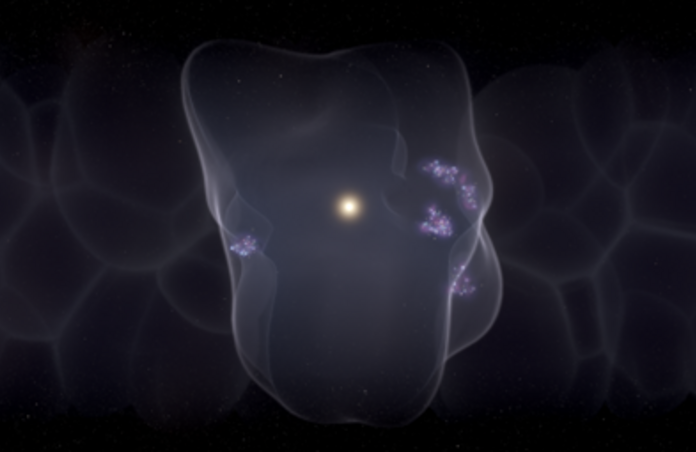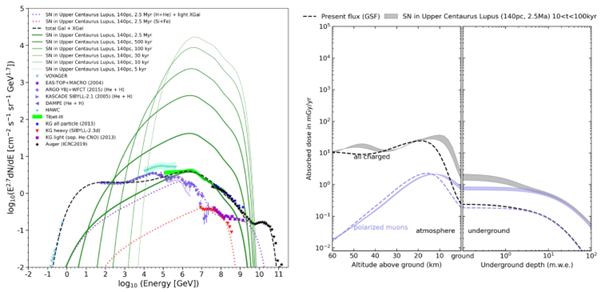The Effects of Local Supernovae on Earth's Evolutionary History

The solar system lies embedded within a sparse region of the interstellar medium 1000 lyr across, known as the local bubble. This cavity in space, characterised by a gas density only about one-tenth of its surroundings, is thought to have been carved out by a series of supernovae from around 15 million years ago. These left their mark on Earth in the form of rare and radioactive isotopes, such as iron-60, discovered within the planet’s crust. In fact, iron-60 concentrations peak at two specific depths, correlating with supernova events that occurred approximately 2.5 and 5.5 million years ago.
In a paper led by Caitlyn Nojiri, her team identify that the event responsible for the peak concentration of the former iron-60 peak could be used to adequately account for certain anisotropies within the cosmic ray (CR) field flux at higher energies. This so-called knee in the CR spectrum has long been a subject of debate, with potential origins varying from the reduced scattering efficiency by interstellar magnetic fields near those energies to representing a transition from primarily intra- to extra-galactic sources of radiation.
The study considers two supernova events as the possible origin of this anisotropy. Their progenitors are assumed to reside within the Tucana-Horologium (TH) association, and the Upper Centaurus Lupus (UCL) subgroup. They model these two events at the same time, 2.5 Myr ago, at two different distances, 230 lyr and 460 lyr respectively. These are subsequently evolved by considering the transport of produced CRs within the interstellar medium using standard diffusion equations. They then compare the incoming spectrum of CRs in these models to observational data. The study identifies remarkable agreement between these data and a lone supernova originating within the UCL.

The study also offers intriguing insights into the evolutionary effects of supernova radiation on terrestrial life. By developing comprehensive models of the evolution and transport of cosmic rays, the team was able to trace the cosmic ray field over time and assess the impact of these nearby supernovae when they first occurred. While they concluded that the radiation levels were insufficient to trigger mass extinctions, prior studies have demonstrated that lower doses of radiation could induce so-called ‘DNA double-strand breaks,’ which are associated with genetic mutations. Consequently, these supernovae may have played a surprising role in promoting biodiversity by accelerating the diversification and adaptation of species
Nojiri et al conclude by highlighting the need to fully understand the biological effects of CR exposure. In particular, the team emphasizes the impact of muons, which dominate the ground-level CR spectrum, and the need to validate their hypothesis regarding the potential evolutionary benefits of light radiation exposure.
--
Journal Source: C. Nojiri et al, Life in the Bubble: How a Nearby Supernova Left Ephemeral Footprints on the Cosmic-Ray Spectrum and Indelible Imprints on Life, The Astrophysical Journal Letters, Vol. 979, No. 1, (2025), DOI:https://doi.org/10.3847/2041-8213/ada27a
Cover Image Credit: Leah Hustak (STSci)
